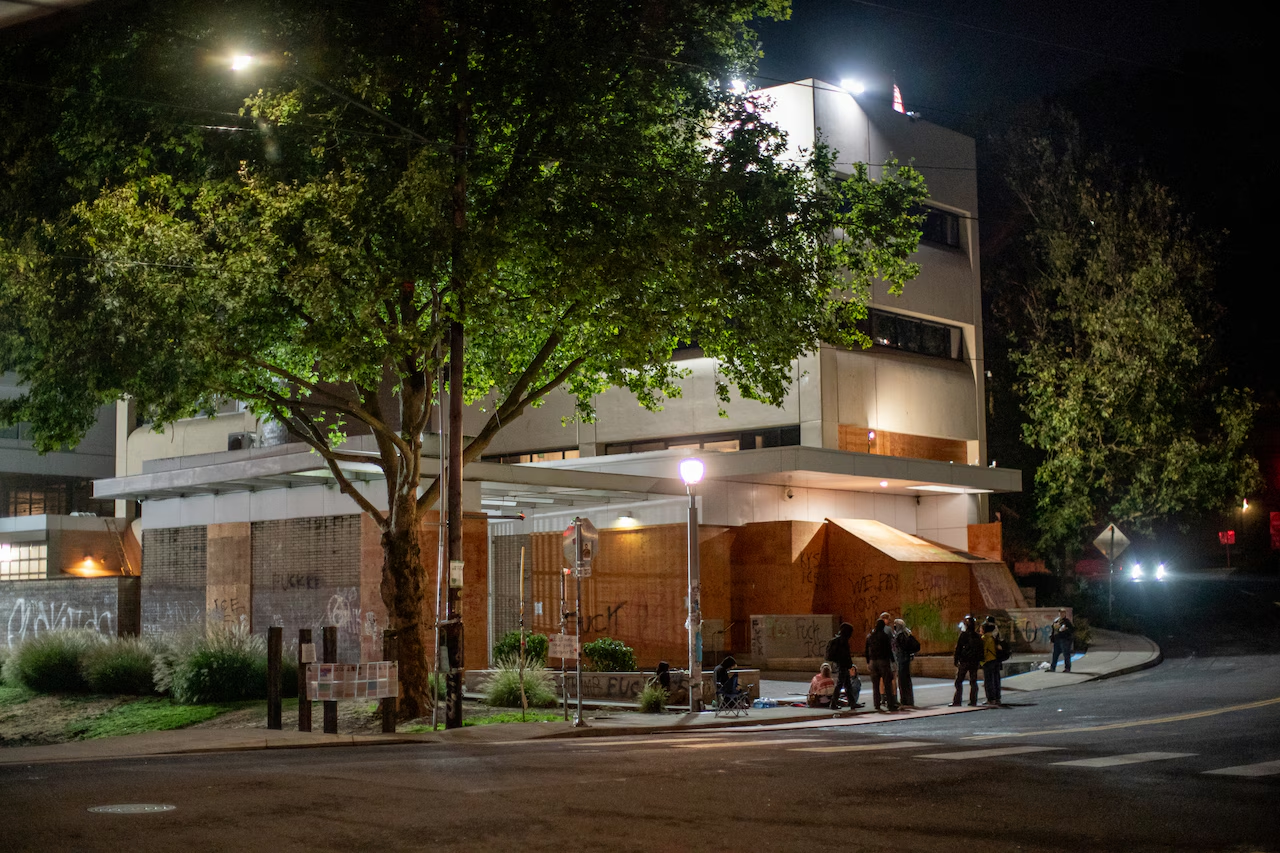PORTLAND, Ore. — Arrests at the U.S. Immigration and Customs Enforcement (ICE) field office in South Portland have slowed significantly this summer, even as tensions between federal authorities and local leaders remain high following President Donald Trump’s order to send additional federal troops to the city.
A Surge in June, Followed by Decline
Since June, federal officers have arrested more than two dozen people outside the ICE facility. Most of those arrests occurred early in the summer, particularly during the first month of demonstrations when crowds swelled to hundreds.
By contrast, recent gatherings have drawn only a few dozen protesters, and arrests have tapered off. Out of 29 total arrests, 18 happened in June, including a spike during a large Fourth of July protest when four more people were charged.
Also Read
Federal Charges and Allegations
Defendants face an array of federal charges, ranging from felony aggravated assault of a federal officer to misdemeanor failure to follow lawful orders.
Prosecutors say protesters vandalized the ICE building, damaged key card readers, blocked federal vehicles, and disrupted internet service by tampering with fiber-optic cables. Others allegedly barricaded the entrance with traffic cones, lumber, scooters, and tables, while some are accused of throwing objects or shining lasers at officers.
Federal Protective Services, Homeland Security, Border Patrol, and ICE agents have all participated in arrests. Portland police made roughly two dozen arrests during June’s demonstrations but have since stepped back, leaving federal officers in charge.
Who Has Been Arrested
The majority of those arrested are Portland residents, though individuals have also come from surrounding Oregon communities, including Oregon City, Beaverton, Gresham, Merlin, Grand Ronde, Gearhart, and Seaside. A small number came from out of state — Tacoma, Vancouver, Kelso in Washington, and one individual from Michigan.
Most of the defendants have been released while awaiting trial. Some have received probation after pleading guilty to misdemeanor charges. Three individuals were sentenced to six months of probation, while five more are scheduled to enter guilty pleas in the coming weeks.
Restrictions on Defendants
As part of their release conditions, defendants are prohibited from entering specific blocks around the ICE building, bounded by South Gaines Street to the north, Boundary Street to the south, Southwest Terwilliger to the west, and the Willamette River to the east.
Judges have also banned them from possessing weapons, fireworks, lasers, or other disruptive devices. Two individuals violated the no-entry order and were brought back before a judge, receiving stern warnings not to return.
Prosecutors have redacted the names of federal officers in court filings, citing concerns about doxxing and harassment.
Leaders Say Situation Is “Under Control”
Despite Trump’s call for more troops, local officials maintain the situation does not warrant federal escalation.
At a Saturday news conference, Gov. Tina Kotek said, “We don’t need help. We got this. We have the situation under control with the ICE facility in Portland.” She emphasized that enforcement has been consistent and those violating the law are being held accountable.
Mayor Keith Wilson and Police Chief Bob Day echoed her remarks, describing the protests as relatively low-key compared with the massive demonstrations of 2020.
Lessons from 2020 Protests
The demonstrations outside Portland’s ICE facility have been far smaller than those following the killing of George Floyd in 2020, when nightly protests engulfed downtown for more than 100 days.
Back then, the Trump administration deployed 755 federal officers from various agencies, including the Federal Protective Service, ICE, and the Secret Service. Their arrival reignited protests that had been diminishing, leading to nightly clashes, tear gas, and widespread injuries.
According to a U.S. Department of Justice inspector general report, the Portland deployment in 2020 cost $12.3 million, with an additional $1.6 million in damage to the Mark O. Hatfield U.S. Courthouse. The report found that many federal officers sent lacked proper training, equipment, or consistent tactics, and Homeland Security did not have a comprehensive strategy for their deployment.
A Different Climate in 2025
Today’s demonstrations at the ICE facility look markedly different. While arrests continue, they are fewer, and the crowds are smaller. Local leaders insist Portland is stable and that additional federal intervention would only inflame tensions.
For now, protesters still gather, albeit in smaller numbers, and federal courts continue to process cases. But compared to the chaos of 2020, Portland officials say this summer’s situation is under control — and does not warrant another wave of federal escalation.












